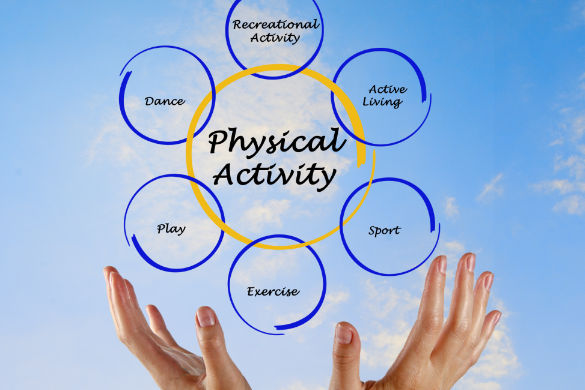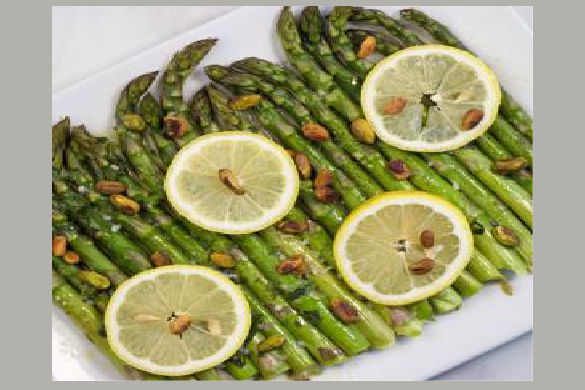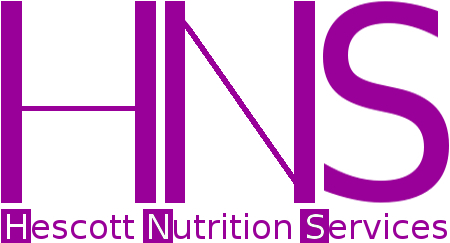.
Welcome to my blog!
.
Brighten Your Winter Days: Nourishing Foods to Combat Seasonal Blues [SAD Solutions]
By Hescott Nutrition Services | posted in December 2024 | Seasonal Affective Disorder, SAD Risk Factors, Gut-Brain Axis, Nutrition and SAD, Lifestyle and Holistic Approaches, Recipes to Support SAD.
At Hescott Nutrition Services, we know that when the days get shorter and sunlight becomes scarce, it can affect your energy and mood. But for some, this shift goes deeper than a case of the winter blues. Seasonal Affective Disorder (SAD) is a form of depression that shows up like clockwork during the fall and winter months, making everyday life feel heavier and harder to navigate.

SAD isn't just about feeling a little sluggish or unmotivated—it's a real condition that can impact your mood, energy levels, and overall well-being. If this sounds familiar, know that you're not alone, and there are ways to reclaim your light, even on the darkest days.
What is SAD?
SAD is classified as a subtype of major depressive disorder. Its symptoms mirror those of general depression but are tied specifically to seasonal changes. Common signs of SAD include:
- Persistent sadness or low mood.
- Fatigue or low energy, even after a full night's sleep.
- Increased cravings for carbohydrates and weight gain.
- Loss of interest in activities you typically enjoy.
- Difficulty concentrating or making decisions.
- Feelings of hopelessness or worthlessness.
For those with SAD, the changing seasons bring more than just a calendar flip—they trigger noticeable changes in brain chemistry and hormone levels, which can disrupt mental and emotional health.
Causes and Risk Factors
The exact cause of SAD isn't fully understood, but researchers point to several factors that may contribute to its onset:
- Lack of Sunlight Reduced sunlight during fall and winter disrupts your body's internal clock, or circadian rhythm, which regulates sleep and wakefulness. This disruption can lead to feelings of fatigue and depression.
- Serotonin Levels Sunlight exposure helps regulate serotonin, a neurotransmitter that influences mood. Low serotonin levels are linked to feelings of depression and can contribute to the symptoms of SAD.
- Melatonin Disruption With longer nights and shorter days, your body produces more melatonin, a hormone that regulates sleep. This excess melatonin can make you feel drowsy, lethargic, and less motivated.
- Vitamin D Deficiency
Sunlight is a natural source of vitamin D, which is crucial for mood regulation and brain health. A deficiency in this nutrient during the darker months may exacerbate symptoms of depression.
Who is Most at Risk?
While anyone can experience SAD, certain factors increase the likelihood of developing this condition:
- Geography: People living farther from the equator, where daylight hours are significantly reduced in winter, are at a higher risk.
- Gender: Women are four times more likely to experience SAD than men, although the symptoms tend to be more severe in men.
- Age: Young adults are more likely to develop SAD, although it can occur at any age.
- Family History: A family history of depression or other mood disorders may predispose you to SAD.
- Existing Mental Health Conditions: People with pre-existing depression or bipolar disorder are more vulnerable to seasonal changes.
How Mood and Brain Function Are Linked to Nutrition
Your diet does more than just fuel your body—it directly influences your brain and emotional health. The connection between your gut and brain, known as the gut-brain axis, plays a crucial role in regulating mood, mental clarity, and overall well-being. When managing Seasonal Affective Disorder (SAD), what you eat becomes an important factor in supporting both your physical and mental health.
Here's how nutrition ties into the SAD equation:
- Serotonin Production. Up to 90% of the body's serotonin is produced in the gut. By eating foods rich in tryptophan, an amino acid that converts to serotonin, you can support better mood regulation.
- Gut Microbiota. The trillions of microbes in your gut influence everything from digestion to neurotransmitter production. Consuming probiotics (like yogurt or sauerkraut) and prebiotics (like fiber-rich vegetables) supports these beneficial microbes and can help stabilize your mood.
- Essential Nutrients
- Omega-3 Fatty Acids: These healthy fats are known to support brain function and reduce inflammation, which is often linked to depression.
- Vitamin D: Adequate levels of vitamin D are essential for maintaining a positive mood and may help alleviate SAD symptoms.
- B Vitamins: Found in whole grains and leafy greens, these nutrients are critical for energy production and neurological health.
By addressing these nutritional factors, you can help balance brain chemicals and hormones, making your body more resilient to the effects of SAD. The right foods can transform your mood, making winter's dark days feel much lighter.
Nutritional Strategies to Alleviate SAD
When it comes to combating the winter blues, food is a powerful ally. Incorporating key nutrients into your diet can support brain function, regulate mood, and improve your body's ability to handle stress.
Six nutrition strategies can help alleviate Seasonal Affective Disorder (SAD).
- Incorporate Probiotics
The trillions of microbes living in your gut play a direct role in regulating your mood. By eating probiotic-rich foods or taking supplements, you can nurture these beneficial bacteria, helping to support a balanced gut-brain connection.
Probiotic-Rich Foods
Include these gut-friendly options in your diet:
- Yogurt (look for live, active cultures).
- Kefir
- Fermented vegetables like sauerkraut, kimchi, and pickles.
- Miso and tempeh.
- Drinks like kombucha or kvass.
A high-quality probiotic supplement is an excellent alternative if you're not a fan of fermented foods. Choose a product that:
- Contains at least 10 billion CFUs (colony-forming units).
- Includes strains like Lactobacillus and Bifidobacterium, which are associated with mood benefits.
- Is third-party tested for quality and potency.
- Add Prebiotic Foods
Probiotics need the right fuel to flourish in your gut, and that's where prebiotics come in. Prebiotics are non-digestible fibers that nourish beneficial bacteria, helping them thrive. Including prebiotic-rich foods in your diet can support gut health and improve mood regulation.
Prebiotic-Rich Foods
- Garlic, onions, and leeks.
- Asparagus and artichokes.
- Whole grains like oats and barley.
- Bananas and apples.
- Nuts and seeds.
- Focus on Omega-3 Fatty Acids
Omega-3 fatty acids are celebrated for their anti-inflammatory benefits and are important in supporting brain health. They help preserve the structure of brain cells and regulate key neurotransmitters, like serotonin and dopamine, which play a vital role in mood regulation.
Sources of Omega
- Fatty fish: Salmon, mackerel, sardines, and trout.
- Plant-based options: Chia seeds, flaxseeds, walnuts, and hemp seeds.
- Fortified foods: Some eggs, milk, and plant-based beverages are fortified with omega-3s.
- Boost Vitamin D Levels
One of winter's most significant nutritional challenges is maintaining adequate vitamin D levels, also known as the "sunshine vitamin." Vitamin D is essential for serotonin production and mood regulation, and low levels are frequently associated with depressive symptoms.
Ways to Increase Vitamin D
- Foods: Fatty fish (like salmon and tuna), egg yolks, and fortified dairy products.
- Supplements: Vitamin D3 is generally recommended, as it's more effective at raising levels in the blood. A healthcare provider can help determine the right dosage for you.
- Eat Tryptophan-Rich Foods
Tryptophan is an essential amino acid that your body uses to produce serotonin, a neurotransmitter that regulates mood and promotes a sense of well-being. Including tryptophan-rich foods in your meals can support your body’s natural serotonin production.
Best Sources of Tryptophan
- Turkey, chicken, and eggs.
- Nuts and seeds (especially sunflower and pumpkin seeds).
- Soy products like tofu and edamame.
- Dairy products like milk and cheese.
- Avoid Mood-Sabotaging Foods
Not all foods are created equal when it comes to your mental health. Certain dietary habits can exacerbate mood swings and increase fatigue, making SAD symptoms worse.
Foods to Limit
- Sugary Snacks and Drinks: These cause blood sugar spikes and crashes, leading to irritability and fatigue.
- Refined Carbohydrates: White bread, pastries, and processed snacks can contribute to mood instability
- Alcohol: It may seem comforting, but alcohol is a depressant that can interfere with sleep and exacerbate low moods.
Lifestyle and Holistic Approaches
While nutrition plays a powerful role in managing Seasonal Affective Disorder (SAD), pairing it with lifestyle and holistic approaches can create a well-rounded strategy to tackle the winter blues. These techniques address not just the body, but the mind and spirit, helping to boost overall well-being.
- Embrace Light Therapy
Light therapy is one of the most effective treatments for SAD. By exposing yourself to bright, artificial light that mimics natural sunlight, you can help regulate your circadian rhythm and improve serotonin production.
Tips for Light Therapy
- Use a light box with at least 10,000 lux brightness, ideally in the morning for 20–30 minutes.
- Position the light box 16–24 inches away from your face without staring directly into it.
- Consistency is key—try to use it daily during the darker months.
- Prioritize Physical Activity

Exercise is a proven mood booster, thanks to its ability to release endorphins—your brain's natural feel-good chemicals. It also helps regulate stress hormones and improves energy levels.
Exercise Ideas for Winter
- Outdoor walks: Take advantage of sunny days for a mood-boosting walk.
- Yoga and stretching: These promote mindfulness while enhancing circulation and flexibility.
- Dance or cardio: Pick something fun that increases your heart rate indoors.
- Practice Mindfulness and Stress Reduction
Mindfulness helps you stay present and manage the anxiety or sadness that often accompanies SAD. Stress reduction techniques can lower cortisol levels, improving both your mood and energy.
Holistic Stress-Relief Practices
- Meditation: Try apps like Calm or Headspace for guided meditations tailored to beginners.
- Breathing exercises: Techniques like diaphragmatic breathing help calm the nervous system.
- Journaling: Reflecting on positive moments or goals can shift your mindset.
- Maintain a Consistent Routine
SAD often disrupts sleep and energy patterns, but maintaining a structured daily routine can help stabilize your circadian rhythm.
Tips for Routine Building
- Go to bed and wake up at the same time every day, even on weekends.
- Schedule meals at consistent times to avoid energy dips.
- To start and end your day positively, incorporate small rituals, like morning stretching or a gratitude practice.
- Connect with Others
The isolation that winter often brings can worsen feelings of loneliness or depression. Connecting with others—whether in person or virtually—can lift your spirits and provide much-needed emotional support.
Ways to Stay Connected
- Plan regular check-ins with friends or family.
- Join online or in-person support groups for SAD or mental health.
- Volunteer: Helping others can boost your sense of purpose and well-being.
- Consider Professional Support
If SAD symptoms are severe or persist despite lifestyle changes, seeking help from a healthcare professional can make a significant difference.
Options for Professional Help
- Therapy: Cognitive Behavioral Therapy (CBT) is particularly effective for SAD.
- Medication: Antidepressants or other prescribed treatments may be recommended in some cases.
- Nutrition Guidance: A registered dietitian can help fine-tune your diet for mental health.
Recipes to Support Mood During Winter
Winter can often feel like a time of heaviness and hibernation, but the right foods nourish your body and uplift your spirit. These recipes are delicious and rich in nutrients that support brain health, balance mood, and energize you during the winter months.
Why These Recipes Work
Each recipe incorporates nutrient-dense ingredients designed to support the gut-brain axis and combat wintertime sluggishness. From probiotics in yogurt to omega-3s in salmon and prebiotics in asparagus, these meals and snacks can work together to keep your mood and energy steady.
Avocado Lime Salmon

Why It Supports Mood
This dish is rich in omega-3 fatty acids, found in salmon, which are essential for brain health and can help reduce inflammation linked to depression. The avocado topping adds heart-healthy monounsaturated fats and potassium, which support energy levels and nerve function. Lime and cilantro provide a burst of fresh flavor and antioxidants.
Ingredients:
- 1½ lbs salmon, skinless
- 1 clove garlic, minced
- 1 tsp olive oil
- Salt and pepper, to taste
- 2 tsp paprika
- 1 avocado, chopped
- 1 red onion, chopped
- 4 tbsp fresh cilantro, chopped
- 4 tbsp olive oil
- 4 tbsp lime juice
Directions:
- Preheat oven to 400˚F.
- On a baking sheet, season salmon with garlic, olive oil, salt, pepper, and paprika.
- Bake for 10–12 minutes.
- In a small bowl, mix avocado, red onion, cilantro, olive oil, and lime juice until incorporated. Be careful not to overmix to preserve the avocado's texture.
- Spoon the avocado topping over the baked salmon and serve.
Frozen Berry Yogurt Bark

Why It Supports Mood
This simple snack features Greek yogurt, a probiotic source that supports gut health and the gut-brain connection. Berries are loaded with antioxidants and vitamin C to combat oxidative stress. Pecans add crunch and healthy fats, promoting stable energy and focus.
Ingredients:
- 2 cups full-fat Greek yogurt
- 1 tbsp maple syrup
- Salt, to taste
- 6 strawberries, hulled and sliced
- 1 cup raspberries, halved
- ½ cup blueberries
- ¼ cup pecans, raw, crushed
Directions:
- Line a shallow baking pan with parchment paper.
- In a mixing bowl, whisk together yogurt, maple syrup, and a pinch of salt.
- Spread the yogurt mixture evenly on the parchment paper.
- Top with strawberries, raspberries, blueberries, and crushed pecans.
- Place in the freezer for at least 3–4 hours until firm.
- Once frozen, break into bark pieces using a chef's knife.
Roasted Lemon Asparagus with Pistachios

Why It Supports Mood
Asparagus is a prebiotic-rich vegetable that feeds gut microbes, enhancing their ability to produce serotonin. The addition of pistachios provides healthy fats and plant-based protein, while lemon adds brightness and vitamin C for immune support.
Ingredients:
- 2 lbs asparagus
- 3 tbsp olive oil
- Salt and pepper, to taste
- 2 lemons (one juiced, one sliced)
- 1 clove garlic, minced
- 1½ tsp tarragon (or ½ tsp dried tarragon)
- ⅓ cup pistachios, raw and shelled
Directions:
- Preheat oven to 400˚F.
- Wash the asparagus and trim off the woody ends. Place on a parchment-lined baking sheet.
- Drizzle with 1 tablespoon of olive oil and rub to coat evenly. Sprinkle with salt and pepper.
- Roast for 8–10 minutes, until asparagus turns bright green and tender.
- While the asparagus is roasting, whisk together lemon juice, minced garlic, tarragon, and the remaining olive oil.
- Once the asparagus is done, arrange on a platter, drizzle with the lemon dressing, and sprinkle with pistachios.
Conclusion
The colder months often bring shorter days and a heavier mood, but with the right strategies, you can take charge of your well-being this winter. By prioritizing nutrition, embracing holistic lifestyle changes, and understanding the powerful link between your gut and brain, you can lessen the effects of Seasonal Affective Disorder (SAD).
Simple changes, like adding omega-3-rich salmon, gut-supporting yogurt, and prebiotic-packed vegetables to your meals, can do more than fuel your body—they can help stabilize brain chemistry and improve your mood. Combine these nutritional adjustments with regular exercise, light therapy, and mindfulness practices for a well-rounded approach to tackling the winter blues.
Every journey is unique, and discovering what works best for your body and lifestyle is essential. If you're ready to take proactive steps toward supporting your mental and physical health this winter, let's work together to create a personalized plan tailored to your needs.
Book an appointment today by going to the page, and we'll work together to make this your brightest winter, or call 347-915-3738.
